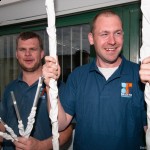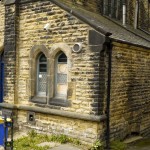If want to know what we scurrilous damp, timber and wall tie specialists do all day, here’s a snapshot of a typical day in and around Leeds (apart from the tyre puncture, which meant one survey was dropped; I’d usually do at least four). I’ve chosen this day because it has a nice bit of […]
Wet rot and X-ray vision, with wall tie corrosion thrown in too.
The Electrical moisture meter and salts – the pariahs of the damp surveyor?
The following is a guest post by Graham Coleman 0f Remedial Technical Services. Graham is a leading expert in the science of damp and timber preservation see about Graham I’m delighted to host this article – enjoy. When one starts to trawl through articles and the Internet, it becomes very clear that to some, […]
Rubbing salt into the wounds
The following is a short article extracted from The RICS journal. I have only made it available on my blog for discussion by the linkedin damp diagnosis group members, following a request by our moderator Phil (we’ll be sharing a cell together if I get into trouble for it;) I will read it properly over […]
Why Yorkshire’s new houses and flats get damp and mouldy
Modern buildings are often poorly ventilated and tenants end up complaining about damp and mould. It’s a real problem for Yorkshire’s landlords and homeowners, who can’t be expected to know how important ventilation is; it isn’t written on the door when they arrive. Most of my ‘damp’ surveys are the result of mould growth, […]
Structural repairs to buildings, using Cintec grouted anchors and diamond drilling methods–Part 1 The Cintec Anchor

Repairs to Yorkshire and Derbyshire’s old buildings and structures, which have moved or cracked, is something I’ve been involved in for about 25 years. Usually resin bonded or cemetitious stainless steel ties are used. Every building is different though and each has to be treated on merit. Sometimes serious movement has occurred or is […]
